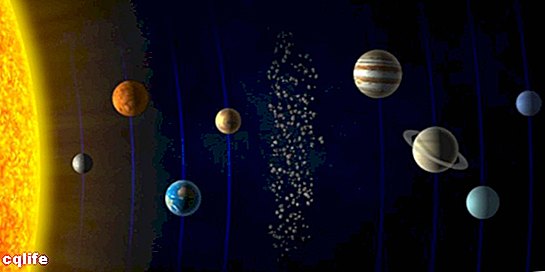We explain what gravity is and how this constant of nature can be measured. Also, its units and some examples.

What is Gravity?
Gravity or force of gravity is a phenomenon of the nature by which the bodies that have mass attract each other reciprocally, with greater intensity as the more massive these bodies are. It is one of the four fundamental interactions of thematter, and is also known as "gravitation" or "gravitational interaction".
This attraction is what the planet exerts Earth on all objects in it, and causes things to fall. But it can also be observed among stars space, such as planets that orbit Sun (attracted by its gravity) or meteorites who are attracted to the mass of our plan and end up disintegrating in the atmosphere.
The general law of physics governing gravitational action is (in classical mechanics)Universal gravitation law, formulated by Isaac Newton in 1687. In it the English scientist explains that the same gravity that makes things fall to the ground is what keeps the planets in their orbit with respect to the Sun.
Much later, in the 20th century, the physicist Albert Einstein postulated his Theory of General Relativity, in which he reformulated certain aspects of gravitation and inaugurated a new perspective on the phenomenon: the relativistic one, according to which gravity would not only affect thespace, but toweather.
Unlike the other fundamental interactions in theUniverse, gravity seems to be the predominant force over long distances (the other three occur over much more immediate distances), responsible for themovement of the celestial stars and of many interactions of the stellar matter.
How is gravity measured?
Theforce of gravity is measured in relation toacceleration that prints on the objects on which it acts, as long as no other forces intervene. This acceleration has been calculated, on the earth's surface, at about 9.80665 m / s2.
On the other hand, the gravitational force can be measured through different formulas, depending on the specific physical approach (classical or relativistic mechanics), and it is usually represented, like other forces, in kilograms of force or in Newtons (N).
Units of measurement for gravity
As we just said, gravity is usually measured in Newtons (N) when we refer to the gravitational force, and in m / s2 when it comes to the acceleration caused by the attraction of a massive body on another with less mass. An example is the acceleration caused by the Earth on an object that is dropped.
Examples of severity

Some examples that confirm the action of the force of gravity are the following:
- The acceleration presented by an object in free fall, as we said before: when the gravitational force due to the Earth acts on it, the speed at which it is moving increases progressively over time.
- The opposite case: an object thrown with all our forces in a straight line, will suffer a deceleration in its movement due to the gravitational force that acts towards the center of the Earth, and which ends up forcing it to fall freely.
- The orbit of the planets around larger stars, such as the planets around the Sun, or the moons and natural satellites around the planets. This is the case with our own planet and our Moon, for example.
- Meteorites that approach or even collide with Earth or other planets are attracted by their large masses.
